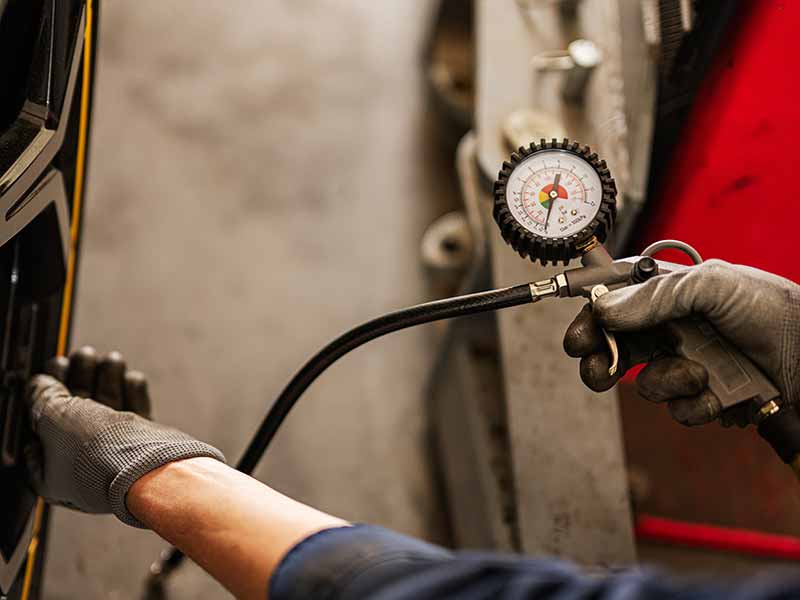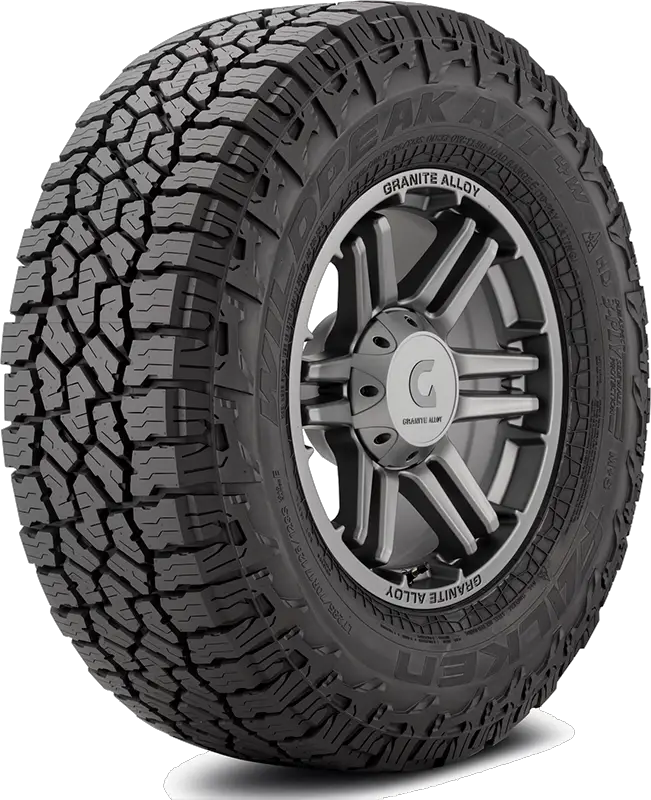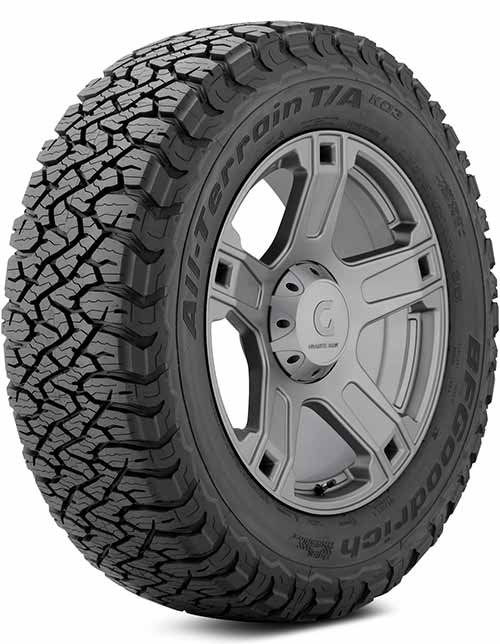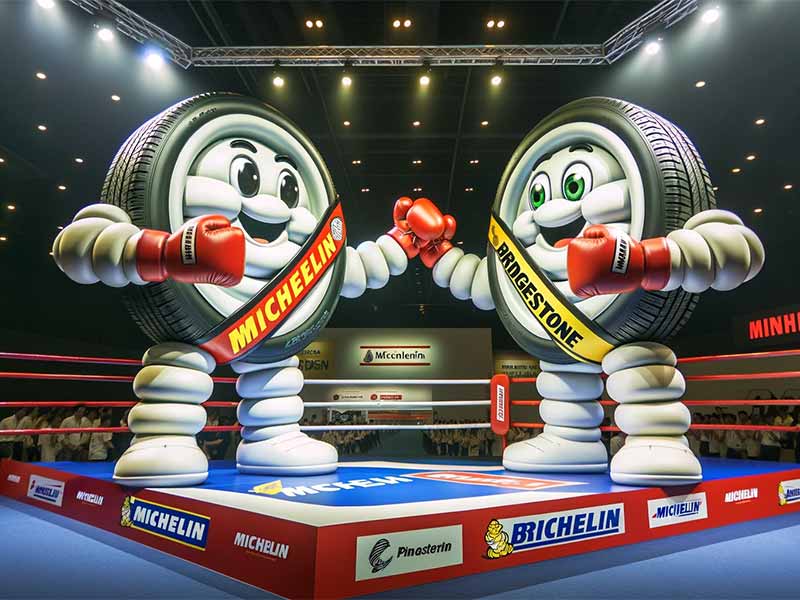Have you ever wondered what keeps your vehicle stuck to the road while you’re driving around town or cruising down the highway? It’s not just gravity – it’s your tire pressure.
It’s an often-overlooked part of vehicle maintenance that plays a vital role in your car’s performance, your safety, and even how much you spend on gas. But what is the ideal tire pressure? Is 40 PSI good tire pressure?
Is 40 PSI Good Tire Pressure?
Is 40 PSI a good tire pressure? It can be, but it entirely depends on your vehicle’s specific requirements. Always refer to your manufacturer’s recommended tire pressure, which you can usually find in your vehicle’s manual or on a sticker in the door jamb, glove box door, or fuel filler.
In this article, we will demystify the concept of tire pressure, dig into whether 40 PSI is an ideal tire pressure, and explain the effects of high tire pressure.
We will also explore if all tires should have the same pressure, how tire pressure changes while driving, and what to do if your tire pressure is too high.
Let’s take a closer look.
Understanding Tire Pressure
Hey there, let’s dive into the nitty-gritty of tire pressure. You might think it’s just about inflating your tires until they seem right, but there’s a lot more science to it.
What is PSI?
First, let’s break down that confusing term, PSI. It stands for “Pounds per Square Inch”. When we talk about PSI in tires, we’re basically talking about how much air is packed into your tires. Each square inch of the inside of your tire has a certain weight of air, or pressure, pushing against it.
Max Tire Pressure vs. Recommended Tire Pressure
Now, when you look at your tires, you’ll notice there’s a bunch of writing on the sides. Among all those numbers and letters, you’ll find the “Max PSI”. This number tells you the absolute maximum amount of pressure the tire can hold. It’s like the tire’s ‘red line’. But just like you wouldn’t want to drive your car at max speed all the time, you don’t want your tires at max pressure all the time either. It’s more of a safety limit rather than a target to reach.
On the other hand, the “Recommended Tire Pressure” is a whole different story. This is the sweet spot where your tires are happy and perform their best. It’s like the perfect amount of sugar in your mom’s famous cookies. You won’t find this number on your tires, though. Instead, it’s usually on a sticker in your car’s door jamb, fuel filler, glove box door, or in the vehicle’s manual. These recommendations are provided by the folks who designed your vehicle. They’ve done tons of testing to figure out the best tire pressure for each specific model, considering things like comfort, handling, fuel economy, and tire life.
So, in a nutshell, your goal is to keep your tire pressure at the recommended level, not the maximum. It’s like the saying “Just because you can, doesn’t mean you should.” Sure, your tires could handle the max PSI, but that doesn’t mean they should.
Remember the Goldilocks Principle
Your tires are a bit like Goldilocks. They don’t like it too high (max PSI), and they don’t like it too low (under-inflated). They want it just right (recommended PSI). Keeping your tire pressure in this ‘Goldilocks Zone’ will make sure you’re getting the best performance, safety, and longevity from your tires. And hey, who doesn’t want that?
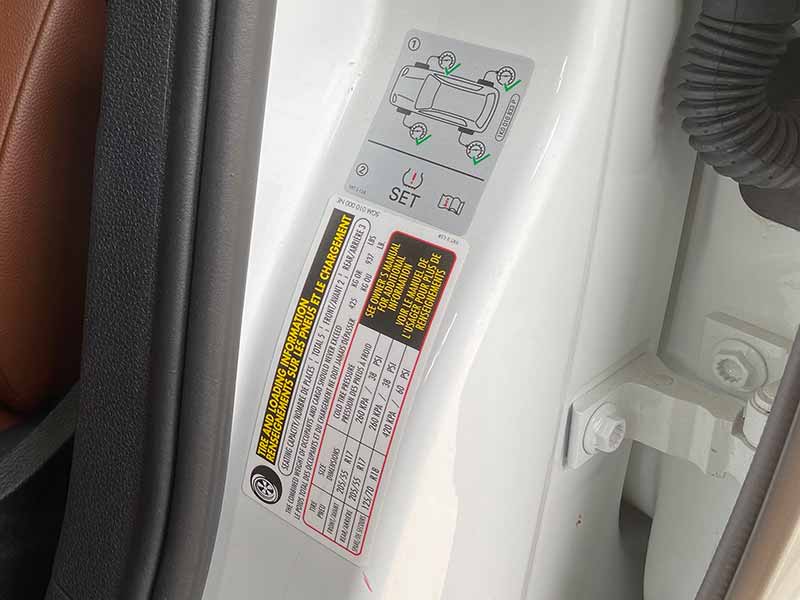
Is 40 PSI a Good Tire Pressure?
Let’s dive into the main question: Is 40 PSI a good tire pressure? Well, just like a good mystery novel, it’s not that straightforward. The answer depends on a couple of things, especially your vehicle and the type of tires you’re rolling on.
Your Vehicle and Tires Set the Stage
Not all cars and trucks are created equal. Some are like featherweight boxers, while others are like heavyweight champs. And just like a boxer needs the right gloves, every vehicle needs the right tire pressure.
So, 40 PSI might be perfect for one vehicle but totally wrong for another. It all depends on the specifications given by the manufacturer. These smart folks have spent countless hours fine-tuning their designs, and they know what’s best for their vehicles.
The Magic of the Manufacturer’s Recommendations
Here’s where the manufacturer’s recommended tire pressure comes into play. These are the “Goldilocks numbers” for your tires. It’s the tire pressure where everything is just right. You’ll find these numbers in your vehicle’s manual or on a sticker somewhere around the car – typically, the door jamb, fuel filler, or glove box door.
The recommended pressure isn’t just pulled out of thin air; it’s based on several factors, including the vehicle’s weight, balance, and tire size. This means it’s the ideal pressure for getting the most out of your tires – good handling, comfort, fuel efficiency, and of course, safety.
So, What About 40 PSI?
The magic number, 40 PSI, might be right on the money if it matches the manufacturer’s recommendation for your specific vehicle and tires. But if the manufacturer’s recommendation is far from 40 PSI, it’s best to stick to what they suggest.
And remember, the max PSI number on your tire is not your target. If 40 PSI is the max pressure listed on your tire, consistently running your tires at this level might lead to premature wear and could even be unsafe.
In the end, it all comes back to the Goldilocks principle – you want the tire pressure to be just right, not too high or too low. And the “just right” number is the tire pressure recommended by your vehicle’s manufacturer.
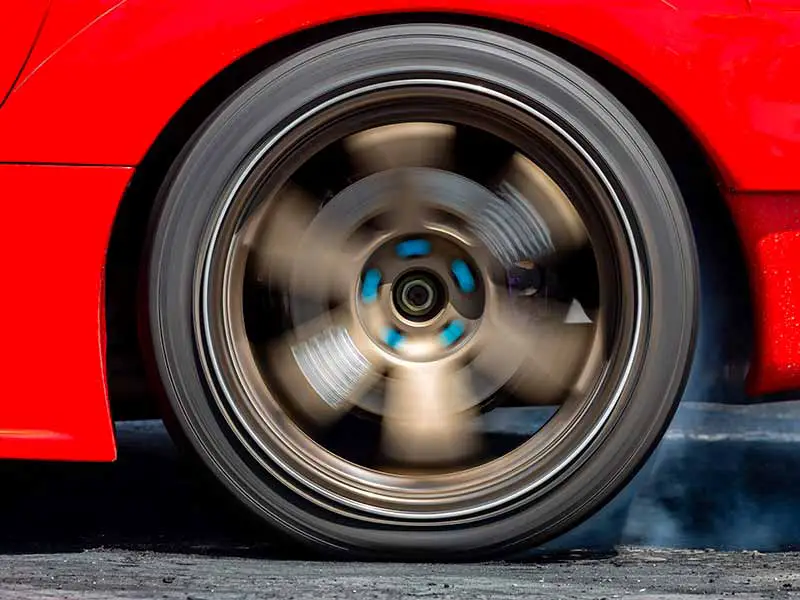
Effects of High Tire Pressure
Now that we’ve covered the “Goldilocks Zone” of tire pressure, let’s explore what happens when the pressure gets too high. You know, like when Goldilocks finds a bed that’s too hard.
What Happens If Tire Pressure Is Too High?
If your tire pressure is too high, the tires can become stiff and rigid. Think of it like over-inflating a balloon – it’s tighter and more likely to pop. This is called “overinflation,” and it’s not something you want for your tires. Here’s why:
- Comfort: When your tires are overinflated, they won’t absorb the shocks from bumps and potholes as well. This means you’ll feel every bump and dip in the road. It’s kind of like riding a bike with no suspension on a rocky trail – not the most comfortable experience!
- Handling: Overinflation can also affect your vehicle’s handling. It reduces the amount of tire that’s in contact with the road, which can make your vehicle harder to control, especially when cornering or braking.
- Tire Wear: Overinflated tires tend to wear out more in the middle. This uneven wear can shorten the lifespan of your tires, meaning you’ll need to replace them sooner.
Can You Put Too Much Air in Your Tires?
The simple answer is, yes, you can put too much air in your tires. If you inflate them past their max PSI, it can lead to a dangerous situation. The excess pressure can cause the tires to burst, especially when heated up from driving or if they hit a sharp object.
Even if they don’t burst, as we discussed earlier, overinflated tires can lead to a bumpy ride, poor handling, and uneven tire wear. That’s why it’s so important to stick to the recommended tire pressure – the manufacturer’s golden number.
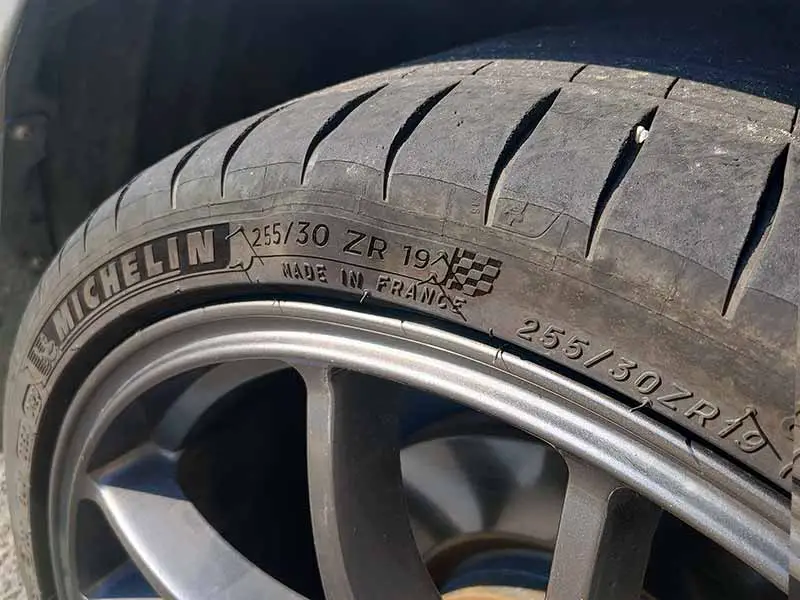
Tire Pressure Differences: Front vs. Rear
Here’s a fun fact that might surprise you: not all tires on your vehicle should necessarily have the same pressure. I know, it sounds a bit strange, but let’s dig into it.
Should All Tires Have the Same Pressure?
In a perfect world, every tire on your car would want the same amount of air, but our world is full of curves, corners, and cargo. This means that sometimes, the front and rear tires might need slightly different pressures.
Why? Well, it all comes down to weight distribution – or how the weight of your car or truck is spread out.
- Front-Heavy Vehicles: Many vehicles, especially front-wheel-drive cars, have more weight over the front tires because that’s where the engine is. More weight means more pressure is needed.
- Rear-Heavy Vehicles: But wait, what about vehicles with more weight in the back? Trucks, rear-wheel-drive cars, or vehicles with lots of cargo or passengers in the back may need higher pressure in the rear tires.
General Guidance on Pressure Differences
Now, this doesn’t mean you should go and inflate your front tires more than your rears, or vice versa. Your first move should always be to follow the manufacturer’s recommendations. Sometimes, these will be the same for all tires, and sometimes they’ll be different.
The manufacturer’s recommended tire pressures take into account the unique weight distribution, handling characteristics, and performance requirements of your specific vehicle.
Remember, these guys are pros, and they’ve done a ton of testing to figure out what works best. So if they say the front and rear tires need different pressures, that’s what you should go with.

I Recommend Every Keep A Portable Air Compressor In Their Car Or Truck
Impact of Driving on Tire Pressure
So far, we’ve been talking a lot about setting your tire pressure, but what happens when you actually start driving? Does the tire pressure stay the same? Spoiler alert: it doesn’t!
How Does Tire Pressure Increase When Driving?
When you start driving, your tires start doing a lot of work. They’re rolling, flexing, and dealing with the weight of your vehicle – all while gripping the road so you can steer and stop safely. This creates heat, and here’s a fun fact: when air heats up, it expands.
So, as your tires heat up from driving, the air inside them also heats up and expands, causing the tire pressure to increase. This is a normal part of driving, but how much it increases can vary based on several factors:
- Driving Speed: The faster you drive, the more heat you generate, and the more your tire pressure can increase.
- Driving Distance: The longer you drive, the more time your tires have to heat up, leading to higher tire pressure.
- Outdoor Temperature: On hot days, your tires can start off warmer and heat up faster, leading to a bigger increase in tire pressure.
Normal vs. Excessive Pressure Increases
Now, a little increase in tire pressure is totally normal. But if your tire pressure increases a lot – say, more than 5 to 6 PSI during a drive – it could be a sign that something’s not right. Your tires could be overinflated, or they might be getting too hot from overloading or high-speed driving.
Remember, while a bit of an increase is normal, your tire pressure shouldn’t be going above the max PSI rating on your tire. If it is, you should let out some air to get back in the safe zone.

What To Do if Your Tire Pressure Is Too High
Alright, we’ve explored the journey of tire pressure, but what happens if your tires end up with a bit too much air? Like when Goldilocks finds the porridge that’s too hot. Don’t worry, we’ve got a plan for that.
Steps to Safely Reduce Tire Pressure
Deflating your tires isn’t as tricky as you might think. You just need to be careful, patient, and remember – safety first. Here’s how you do it:
- Check the Pressure: First things first, use a tire pressure gauge to check how high the pressure actually is. Make sure you do this when the tires are cool, preferably after being parked for a few hours.
- Deflate the Tires: If the pressure is indeed too high, you can release some air. Many pressure gauges have a small button or knob on the back that you can press against the valve stem to let out air. Just press it gently, and air will start hissing out.
- Check Again: After letting out a bit of air, check the pressure again. Repeat the process until you reach the recommended tire pressure. Remember, it’s better to do this gradually and check frequently to avoid letting out too much air.
When to Consult a Professional
But hey, if you’re unsure about any of this or uncomfortable doing it yourself, there’s no shame in seeking professional help. You can always visit a local tire shop or service center. They’re experts in these things and can help you adjust your tire pressure safely.
Resources
Below are some links you may find helpful when learning about tires
- What’s the acceptable range for over- and under-inflation of tires? – The San Diego Union-Tribune
- 6 things you need to know about tire pressure – Nonda
Final Thoughts
We started off with a simple question about tire pressure, and we ended up going through a deep exploration into the world of tires. But as we’ve learned, tire pressure is more than just a number.
The key takeaway from our journey? Always stick to your vehicle manufacturer’s recommended tire pressure. It’s the “Goldilocks” number – not too high, not too low, but just right. 40 PSI might be perfect for one vehicle, it might not be for another.
Good luck and happy motoring.
